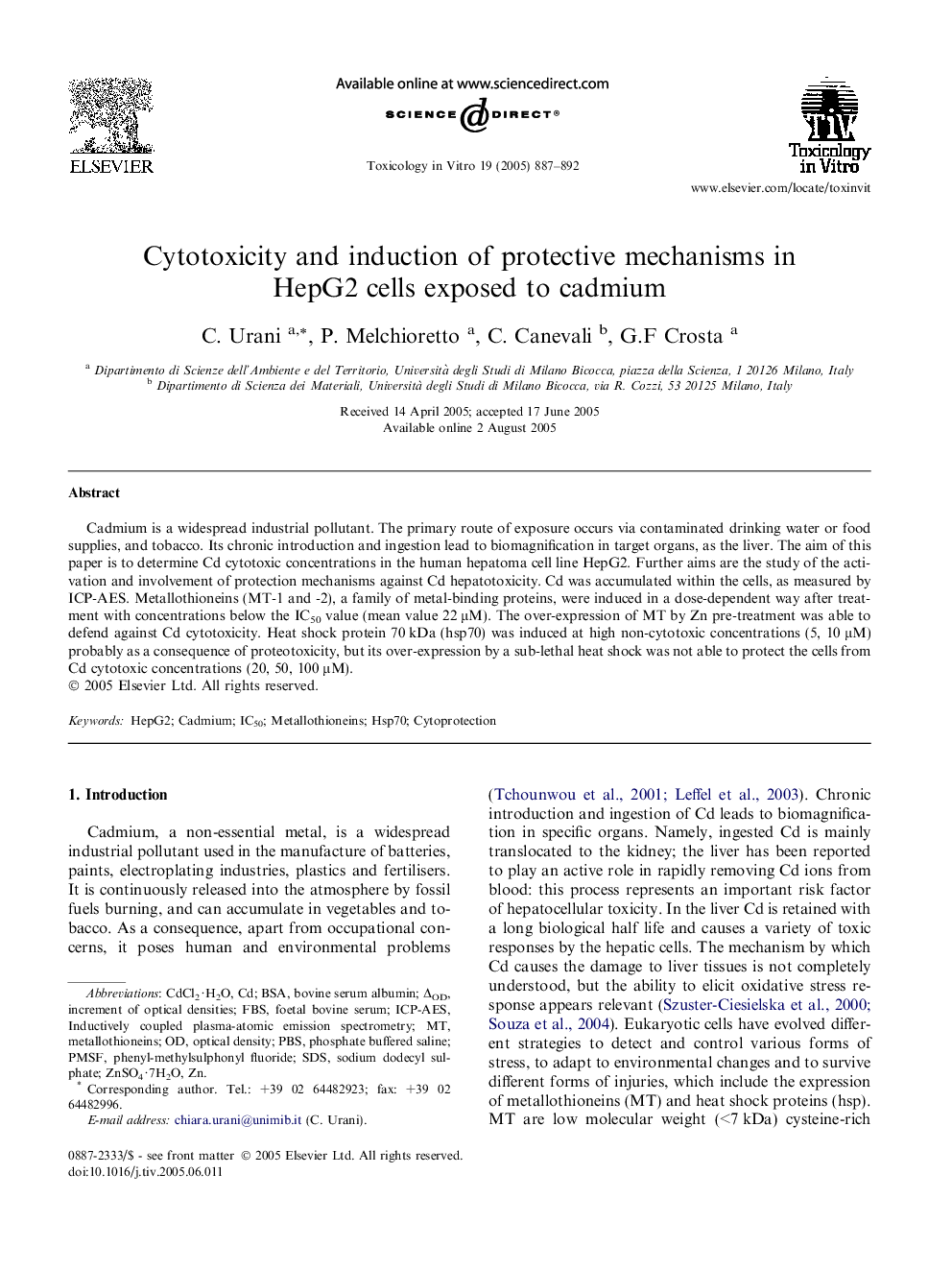| Article ID | Journal | Published Year | Pages | File Type |
|---|---|---|---|---|
| 9038794 | Toxicology in Vitro | 2005 | 6 Pages |
Abstract
Cadmium is a widespread industrial pollutant. The primary route of exposure occurs via contaminated drinking water or food supplies, and tobacco. Its chronic introduction and ingestion lead to biomagnification in target organs, as the liver. The aim of this paper is to determine Cd cytotoxic concentrations in the human hepatoma cell line HepG2. Further aims are the study of the activation and involvement of protection mechanisms against Cd hepatotoxicity. Cd was accumulated within the cells, as measured by ICP-AES. Metallothioneins (MT-1 and -2), a family of metal-binding proteins, were induced in a dose-dependent way after treatment with concentrations below the IC50 value (mean value 22 μM). The over-expression of MT by Zn pre-treatment was able to defend against Cd cytotoxicity. Heat shock protein 70 kDa (hsp70) was induced at high non-cytotoxic concentrations (5, 10 μM) probably as a consequence of proteotoxicity, but its over-expression by a sub-lethal heat shock was not able to protect the cells from Cd cytotoxic concentrations (20, 50, 100 μM).
Keywords
Related Topics
Life Sciences
Environmental Science
Health, Toxicology and Mutagenesis
Authors
C. Urani, P. Melchioretto, C. Canevali, G.F Crosta,
